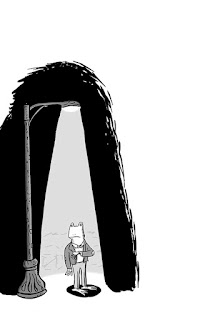This review is the first in a three-part series. All three books tackle the theme of "Think For Yourself" in very different ways. This first book is about a traditional character in Middle Eastern stories named Nasreddine. The historical note in the back of the book reads, "Stories about Nasreddine are told throughout the Middle East and beyond. They are often said to be based on a real man who lived in Turkey during he Middle Ages. The stories have been changed and added to over the years, but Nasreddine has never lost his ability to offer both wisdom and delight."
Nasreddine
by Odile Weulersse (translated from the original French by Kathleen Merz)
illustrated by Rébecca Dautremer
Eerdmans Books for Young Readers, 2013
review copy provided by the publisher
This story starts simply enough -- Nasreddine and his father load the donkey with dates to take to the market. Nasreddine's father rides the donkey and Nasreddine walks behind with his slippers off because the road is muddy from the last rain. In the city, someone comments that the father is lazy and irresponsible to let his son walk shoeless in the mud behind the donkey. Nasreddine's father, Mustafa, is unperturbed by the comment, but Nasreddine is embarrassed and wants to go home. The next week, when they take the wool to the weaver, Nasreddine convinces his father that his ankle is twisted so he can ride the donkey while his father walks behind. Some women they pass comment on the lack of authority of a father who lets his child ride while he walks.
Nasreddine continues to listen to what others say about the way he and his father and the donkey are traveling to market until finally he proposes to his father that they carry the donkey to market. At this point, Mustafa intervenes and guides Nasreddine to the understanding that he shouldn't listen to what others say. "It's up to you to decide if what you're hearing is wise, or if it's only a silly and hurtful remark." When Nesreddine declares, "I understand! You can't be afraid that other people will judge you or make fun of you," Mustafa (wryly? ironically?) expresses his pride in a son who can reason so well.
This may be an old story, but the message is timeless.










